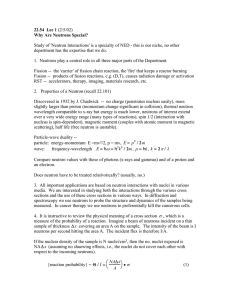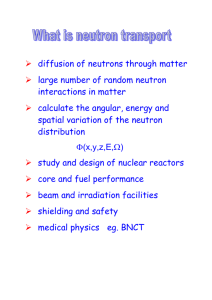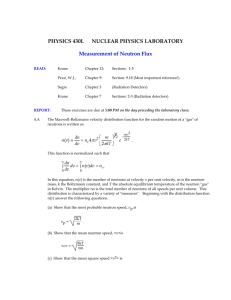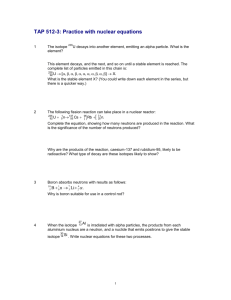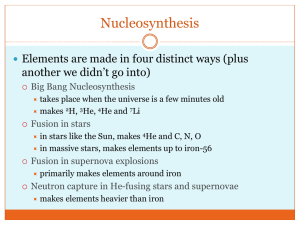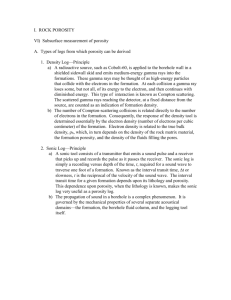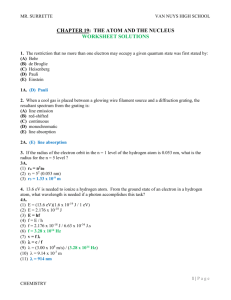When a particle collides with a nucleus, the hit can either be elastic
advertisement
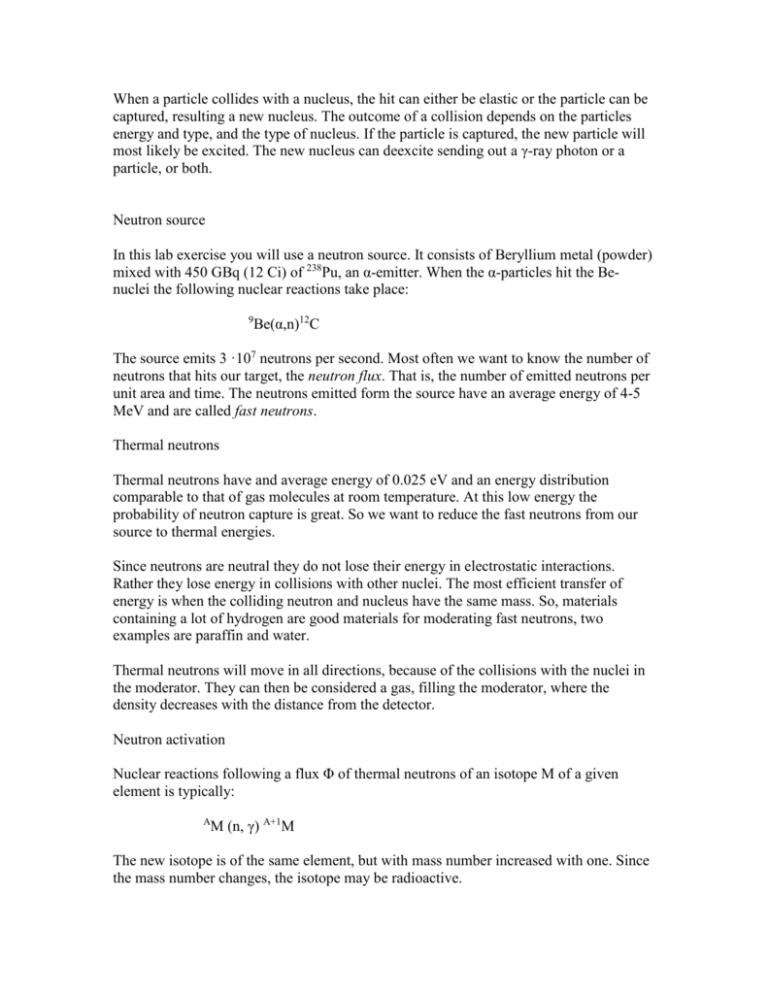
When a particle collides with a nucleus, the hit can either be elastic or the particle can be captured, resulting a new nucleus. The outcome of a collision depends on the particles energy and type, and the type of nucleus. If the particle is captured, the new particle will most likely be excited. The new nucleus can deexcite sending out a γ-ray photon or a particle, or both. Neutron source In this lab exercise you will use a neutron source. It consists of Beryllium metal (powder) mixed with 450 GBq (12 Ci) of 238Pu, an α-emitter. When the α-particles hit the Benuclei the following nuclear reactions take place: 9 Be(α,n)12C The source emits 3 ·107 neutrons per second. Most often we want to know the number of neutrons that hits our target, the neutron flux. That is, the number of emitted neutrons per unit area and time. The neutrons emitted form the source have an average energy of 4-5 MeV and are called fast neutrons. Thermal neutrons Thermal neutrons have and average energy of 0.025 eV and an energy distribution comparable to that of gas molecules at room temperature. At this low energy the probability of neutron capture is great. So we want to reduce the fast neutrons from our source to thermal energies. Since neutrons are neutral they do not lose their energy in electrostatic interactions. Rather they lose energy in collisions with other nuclei. The most efficient transfer of energy is when the colliding neutron and nucleus have the same mass. So, materials containing a lot of hydrogen are good materials for moderating fast neutrons, two examples are paraffin and water. Thermal neutrons will move in all directions, because of the collisions with the nuclei in the moderator. They can then be considered a gas, filling the moderator, where the density decreases with the distance from the detector. Neutron activation Nuclear reactions following a flux Φ of thermal neutrons of an isotope M of a given element is typically: M (n, γ) A+1M A The new isotope is of the same element, but with mass number increased with one. Since the mass number changes, the isotope may be radioactive. The production rate F is a product of the neutron flux, the number of nuclides of the element and this nuclides reactions probability for capturing a neutron (σ): F = σ Φ NT , equal the number of nuclear reactions per unit time If the new nuclide is radioactive, decaying with decay constant λ, the following equation is valid: …….. This is an expression for the number of A+1M at any time. Solving equation (1) gives: …….. …….. and where N0 is the number of A+1M after irradiation, and D0 the decay rate. Since A+1M is radioactive, the amount will decrease when irradiation is over. After a time t the decay rate is given by: …….. Please notice: t = time after irradiation τ = time of irradiation T = target When T >> T1/2 in equation (2) the maximum decay rate possible is D() = σ Φ NT. This condition is called Time of irradiation Metning 0,01T1/2 0,1T1/2 0,5T1/2 1,0T1/2 2,0T1/2 3,0T1/2 10,0T1/2 0,7% 7% 29% 50% 75% 87,5% 99,9% Φ: neutron flux, cm-2s-1 σ: NT: D0 : reaction probability, cm2 or barn, 1 barn = 10-24 cm2 number of atoms in target decay rate at end of irradiation (dpm or Bq)

